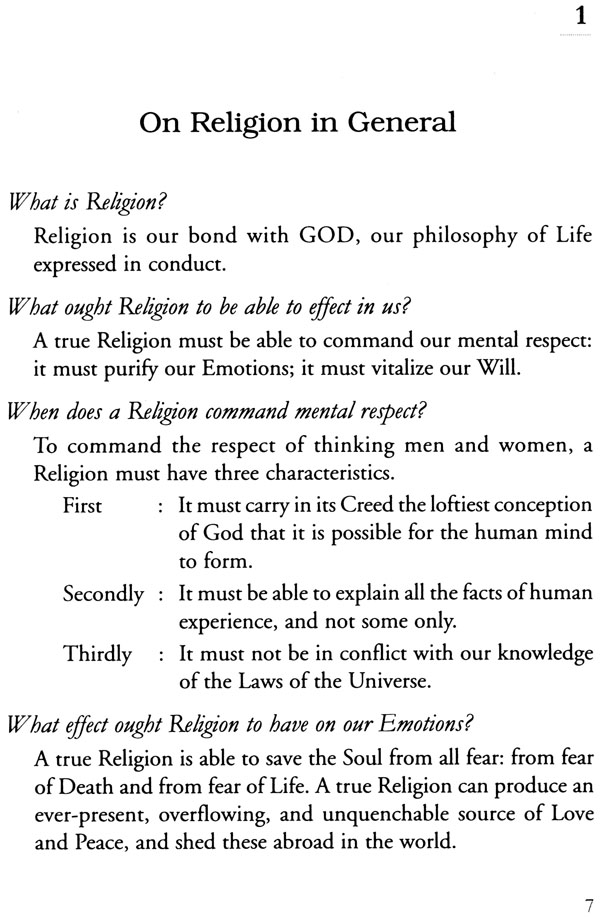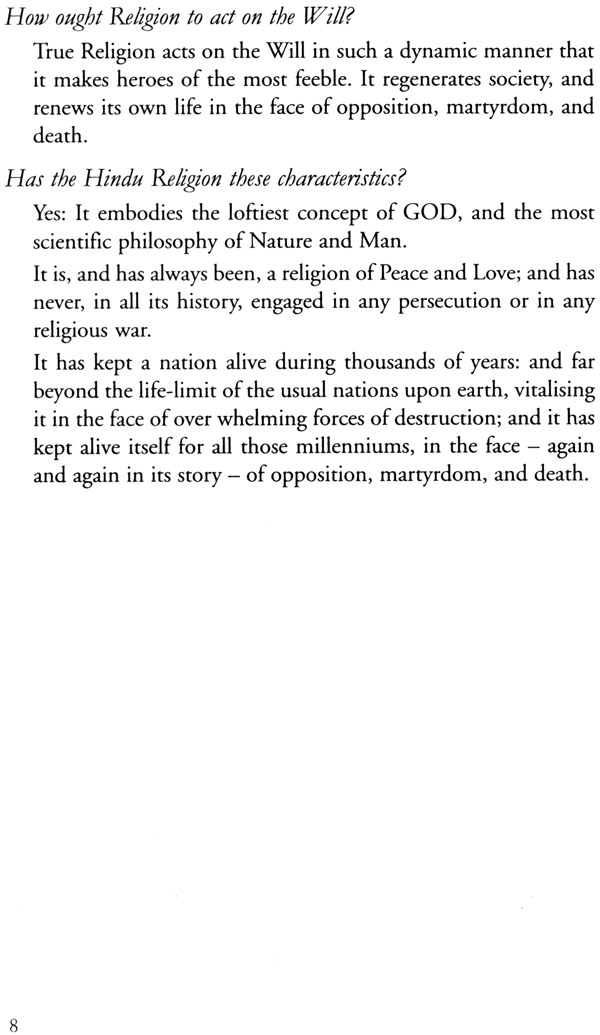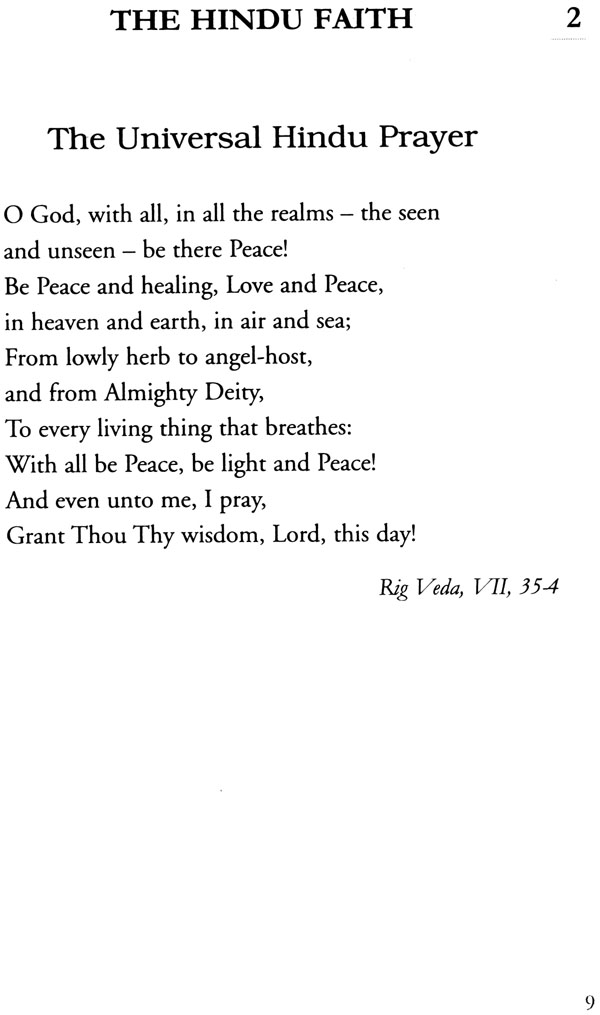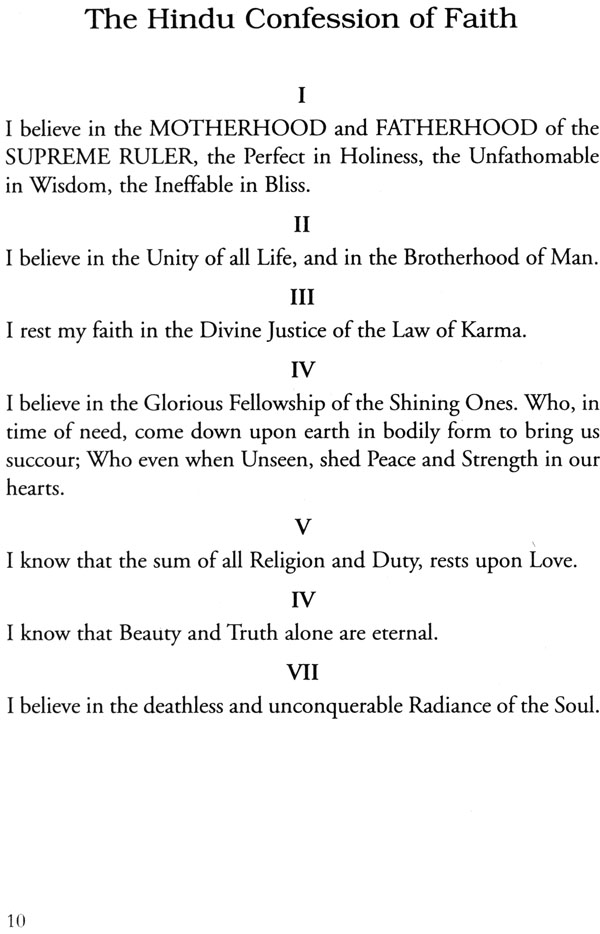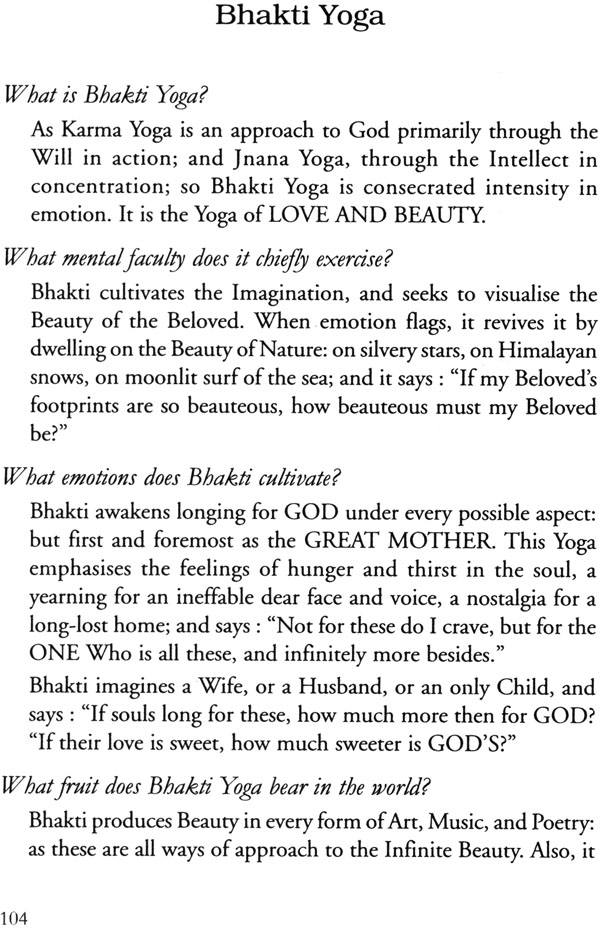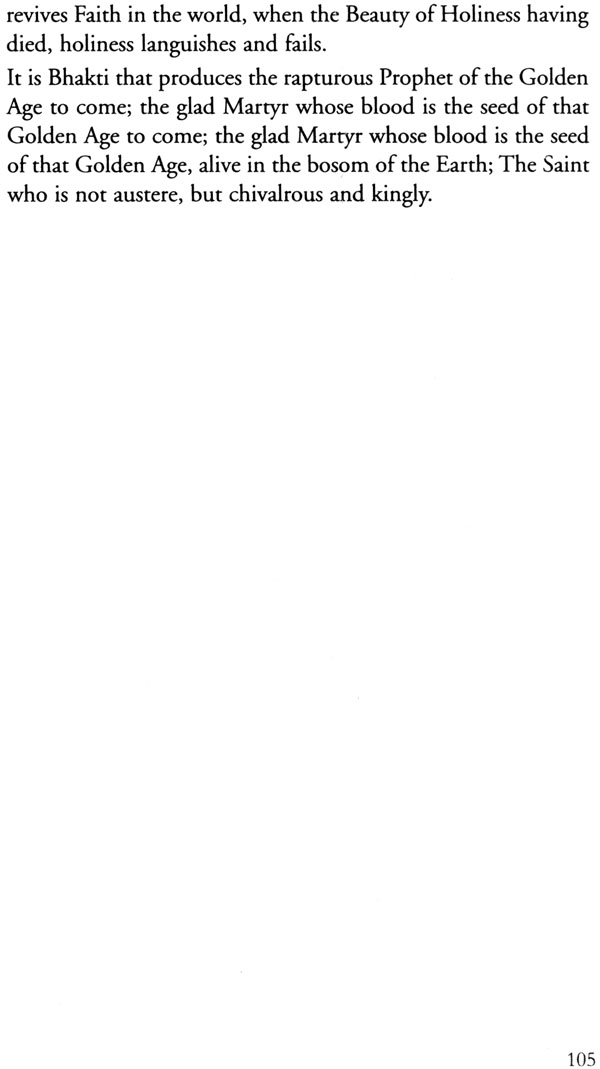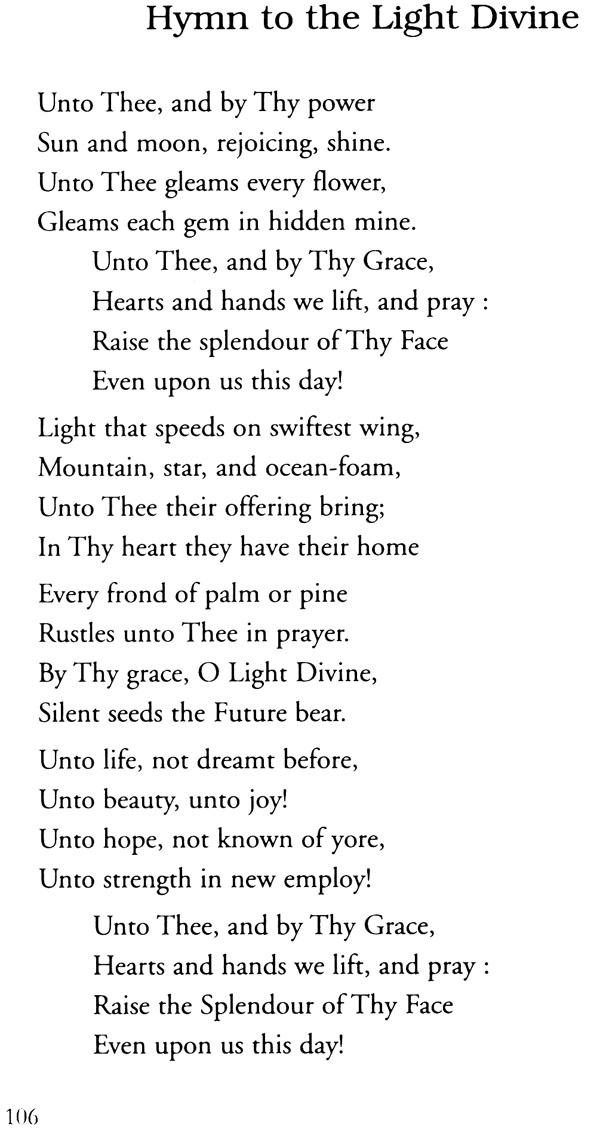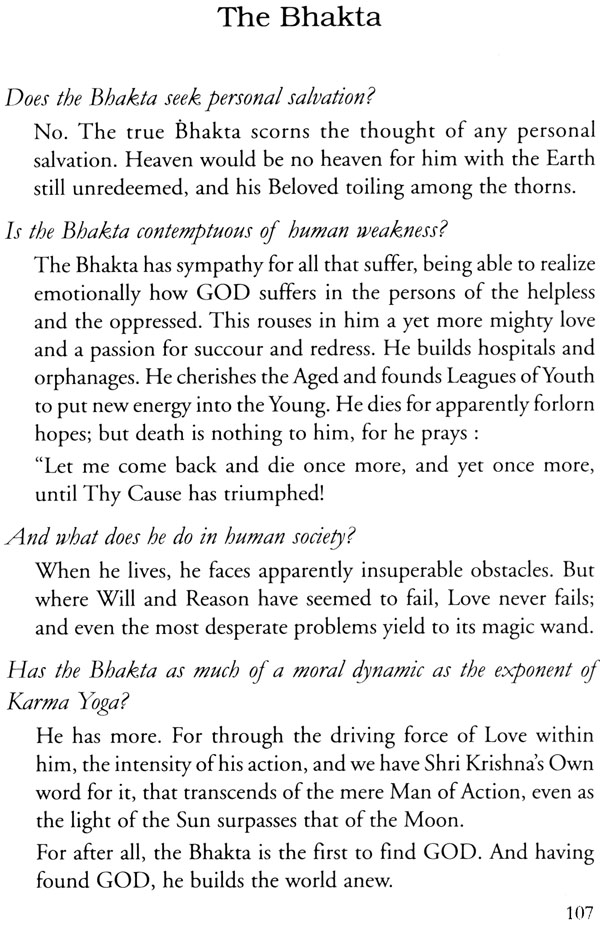
An Introduction to the Hindu Faith
Book Specification
| Item Code: | NAC604 |
| Author: | John R. De. Lingen |
| Publisher: | Sterling Publishers Pvt. Ltd. |
| Edition: | 2008 |
| ISBN: | 9788120740860 |
| Pages: | 115 |
| Cover: | Paperback |
| Other Details | 8.5 Inch X 5.5 Inch |
| Weight | 150 gm |
Book Description
The book The Hindu Faith, contains prayers of infinite beauty gathered from the Rig Veda, the Atharvaveda, the Yajurveda and the Bhagvad Gita and is translated eloquently into English verse by the author for the edification of the Hindu Faith.
The reviewer recommends the book not only to the Hindus, whose favourite study is comparative religion, though not with a view to proselytizing, but can be read by all. He considers truth as a diamond with several facets, one of them being Hinduism.
After a careful reading of John de Lingen’s The Hindu Faith, one feels that the spirit of the Indian people, who have evolved such a sublime religion, is unconquerable. Their spiritual civilization from the hoary ages of the Vedas and the Upanishads to Tagore and Gandhi through to the present age will continue to survive, though all other civilizations may decay.
John R. tie Lingen-Kilburn, clergy, poet, writer, linguist, classicist and philosopher, was born in Russia on 29th November 1886 His father John -Kilburn descended from an ecclesiastic family in Scotland and belonged to the Presbyterian Church of the reformed Calvinist background. John tie Lingen was educated at the Edinburgh University from where he had a first class MA. in English and Archeology.
He was enrolled in the British Army during the First World War; he fought a few decisive wars, was wounded and discharged. At the age of3S, he came to Mauritius to serve as a priest in the Presbyterian churches. At forty, he was appointed a master of the Royal College of Curepipe, and he retired as a senior master at the age of56 in 1942. He returned to Scotland, never to return again.
As a linguist, he knew several European languages like French, German, Russian, Finnish, etc. Besides he also had knowledge of Latin, Greek and Hebrew. He was a poet of repute. He produced two collections of poems; translated two other books of poems of other writers from French into English; and finally translated the text of the Vedas into a book — The Golden Threshold in 1937. A year later, his translation of The Bhagavad Gita or The Lord’s Song, line by line from Sanskrit into English in poetic and metric language, saw the light of day. His love for Hinduism was phenomenal. He became a vegetarian and a teetotaller. He defended the Hindi language and the Indian culture, for in his view, salvation to mankind was to come from India and its metaphysical teachings.
Mauritius has been privileged to have visitors of merit throughout its history, either during the French or the British periods. Bernadin de Saint Pierre wrote his masterpiece Paul and Virginia during the French occupation. Where as, Charles Baudlaire, Sir Walter Bessant, Mark Twain, Joseph Conrad etc came to Mauritius during the British occupation in the nineteenth century Nearly all being writers of great renown, they have left their mark in the historical literature of Mauritius. Similarly, John de Lingen-Kilburn, who came and stayed in Mauritius from 1921 to 1942, and who have authored half a dozen of books, has left his imprint in the Island’s literature of English expression.
After authoring Songs to Eurydice and Wings of the Chrysalis both collections of poems, he undertook the study of Vedic Scriptures and produced two major works on Hinduism. One The Golden Threshold, and the other The Bhagavad Gita in 1937 and 1938 respectively. Both books were published in Port Louis, Mauritius by La Typographie Moderne, the first being published by The Indian Cultural Association and the second privately.
The Golden Threshold; or An Introduction to the Hindu Faith is prefaced by O.S Geerganan, but for reasons unknown O.S. Geerganan, has not mentioned the names of the three Vedas in his preface from which the Mantras have been selected, translated and expounded by John de Lingen,
The book in fact contains sixteen mantras from the Rig Veda, three from the Yajur Veda and Seven from the Atharva Veda; ten Slokas from the Bhagavad Gita; two from the Manusmriti, and fourteen stanzas or poems from miscellaneous sources. In all there are fifty-two mantras, slobs, stanzas or poems, all translated in English from the original text? Besides, the book is divided in sixteen chapters called sections and there are fifty-texts in prose, each one with a specific topic, culled from Vedic religion that enhances the lives of man, and all these are drawn from the philosophical treatises of Hinduism.
It is an undeniable ct that the book which is purely based on the Vedas, allied vedic texts, which was produced in Mauritius by an English man, at a time, when the Indo-Mauritian intellectuals were groping in the dark in philosophical matters, for they had nobody in there midst in the caliber of John de Lingen who could have produced such a book. This may have been the reason that The Golden Threshold has remained unevaluated properly until recently.
Here, I may say, I am privileged to have a cordial relationship with the Vedic scholar in the capacity of Dr Bhavanilal Bharatiya of Jodhpur, India who on my request, has courteously agreed to go through the book, The Golden Threshold and has analysed the book as it should have been done. His analysis is being given in the book in the form of a Foreword.
The new edition is being presented in a systematic way. It has also been deemed fit to bring appropriate changes in the presentation and so the new edition is being published under the appellation, An Introduction to the Hindu Faith for more convenient purpose.
In re-editing the hook in 2008, the aim is two fold. First, to honour the author, who for one reason or another had fallen into oblivion in spite of having produced two wonder-full books in Hinduism with appropriate commentaries. Secondly, John de Lingen’s present hook may be said to be a humble gift of Mauritius to the philosophical speculation of Mother India, the land of the sages and rishis.
Religion is the answer to the unsatisfied craving of the part for completeness, to the cry of the fragment that is the Spirit in man for the Whole Spirit, the pressure against the limitations of Time and Space by the Eternal and the Limitless. All the religions of mankind are so many byroads leading to the One Supreme Goal. Each man worships the highest idea of God that he can reach by the straining of his mind and by the up-soaring of his heart. But as men can think only within limitations — limitations of their own thought and love — their ideas of God differ. And each Faith tends to impose its own limitations as tenets upon its adherents, beyond which they have no right to probe. In Hinduism alone, we have ample scope to soar as high as we can; no limit of any sort is imposed on our minds.
When the Hindu has reached a limit of thought; when he finds that words fail him, and that silence alone is rational; when he wakes to the realisation that darkness surrounds him and that he cannot soar any higher, he murmurs: — “Neti, Ned! — This is not Finality!” He hopes that in days or lives to come he may be able to pierce a little farther: for to him there is ever a Beyond. In one of the Upanishads — those crystal gems of divinely illuminated human wisdom — we read:
“Man is created by Thought, and what a man thinks upon, that he becomes. Therefore think upon Brahman!” What is true about man, is also true of nations. And long ages before the West had any population at all, (not to speak of religion or philosophy,) there were innumerable sages in India, who fixed their profoundest thought in meditation on the SUPREME and ABSOLUTE.
Hinduism places no fetters on the intellect: man may think as he can; there is no blasphemy in investigation. There is nothing too sacred to be tested and questioned. The Rishis thought till their minds grew dizzy; they thought till an effect of immensity was felt: so much so that the depth and splendour of that meditation dwelt in their minds and became part of themselves. They could think of nothing as outside the ONE from whom are born breath and mind and all the senses, Sun and Moon and all the elements, oceans and mountains, rivers, trees, and herbs.
From this thought, which was like a generating seed, was born the Hindu Faith, and India flowered with a civilisation and a culture, unrivalled in all the world, for the depth of its philosophy, the spirituality of its Religion, and the perfection of its Ethical Code.
It is true that different schools of thought and various systems of philosophy flourished in that land at different periods. Buddhism, Jainism, Sufism, and other doctrines have held their sway. Again and again Hinduism has faced hostile scrutiny and hostile Francis, and deadly persecution. Again and again it has been threatened with the degradation and destruction of its lofty ideals and sublime doctrines. Foreign kingdoms have been established in that country as a result of invasion, and, with them, foreign religions. Hindu learning and Hindu philosophy have been despised and trampled upon.
And yet, in spite of all, the Hindu Faith has not been carried away by Time’s tremendous cataracts. The Hindu Faith has stood like a gigantic rock in the midst of a tempestuous sea. The forces that sought to work its ruin, have themselves been spent in a fruitless endeavour, and been scattered as wreckage over the far horizon of the boundless Ocean of the Past. But wherein lies this secret of Life, of immortal Youth?
It lies in the Divine Spirit to whom the door is ever held open by the Ideals of the Hindu Religion; it lies in its own spirit of Endurance, Tolerance, and Charity; it lies in the Universal outlook of the Hindu Faith. The supreme value of its philosophy is found in the fact that it meets every human need, so vast is its scope.
An thus, India has always assimilated her invaders, enriching both her own culture and theirs; while the various invasions and triumphs of physical force, have not been able to touch het Soul. Ah, better indeed to lose the whole world, than to lose one’s Soul!
Let no man that the teaching and the ideals of Hinduism are matters of the Past! Are there pauses in its millennial rhythm? What matter, when the life is millennial also? Whenever India turns to those Ideals which are her generating Life, her strength, instinct with ancient spirit, is renewed... An she will yet lead Humanity into a new era of Light and Wisdom, of Beauty and Brotherhood, of Peace and Harmony.
In presenting us with “The GOLDEN THRESHOLD”, the Author has done a great service to the Hindu Faith. it is not the first book of its kind in the English language, for many treatises on the different aspects of Hindu Religion and Philosophy have been published by European and American writers. But it is the first attempt, to our knowledge, to expound the ONE FAITH that underlies all the systems. The Author’s aim has been to set the great principles of the Hindu Religion in a dearer light before the average reader, and to indicate their bearing on modern thought and life. He has put forward only such ideas as are accepted by Hindus of all schools of thought, and has abstained from expressing any views that might give rise to controversy. Therein lies the beauty of the work. The sublime doctrines on which all our theologians, priests and pandits, are agreed are lucidly and simply described; and the exposition can be safely regarded as free from any matters upon which there is a difference of opinion.
The chapter on the Hindu Trinity is lit up by an insight which is impossible to anyone save a true poet. Not only has the Author faithfully depicted Brahma, Vishnu, and Mahadeva — the three distinct Shaktis of the TRIUNE GOD, but to Each of Them is united the Maternal Principle, personifying the powers and qualities attributed to that particular Aspect of SUPREME GODHEAD.
These are all worshipped by the Hindus as symbols, because. They help to fix the attention of the worshipper on the Triple Manifestation of the ONE, the Object of his adoration. Here in lies the richness and variety of Hindu symbology, rich and varied as the manifested Powers of GOD.
The Author’s conception of Saguna Brahman — Brahman manifested with the three qualities of Sat, Chit, Ananda — as distinct from Nirguna Brahman — Brahman Unmanifest — is precise, and has been made clear to the Reader.
So also is the Theory of Maya. The writer differentiates between GOD’S, Maya and Man’s Maya, At first sight, the idea appears some what vague and mystical; but a closer analysis of the Author’s conception of Maya gives it an accent of finality. No one whose spirit was not illumined and whose soul was not guided by a ray of Divine Light, could possibly have attempted to think and write on such difficult aspects of the Hindu Faith.
The Author illustrates the main statements by quotations from our Scriptures. In these he has usually rendered the very metre of the Sanskrit originals. We are glad to observe that in spite of the difficulty of the verse-craft, his translation is practically literal and verbatim. The “GOLDEN THRESHOLD” should be read very slowly, and with meditation and prayer, so that the spirit that breathes in every word may have time to enter into the spirit of the Reader. It will give comfort and solace to the soul, satisfaction to the mind. The fact that it comes from the pen of a scholar, causes its tone to be objective and restrained, rather than emotional. But in those who read it, it evokes a warm glow of Love and Hope. Such a Faith cannot indeed be conquered. Nay, it must go forth to conquer, as it has done in the Past, by its Beautys its Wisdom, its Humanity, its Divinity!
Let the Sons and Daughters of this Faith, hold up their heads and speak words of courage to their hearts. For if they remain true to it, the Future is theirs!
| Foreword – Dr Bhavanilal Bharatiya | v | |
| Preface – Pahlad Ramsurrun | ix | |
| Introduction – O S. Geerjanan | 1 | |
| 1. On Religion in General | 7 | |
| 2. The Hindu Faith | 9 | |
| The Universal Hindu Prayer | 9 | |
| The Hindu Confession of Faith | 10 | |
| The Hindu Faith: Its Sources | 11 | |
| 3. God | 14 | |
| God as Spirit | 14 | |
| God as Mother | 17 | |
| Prayer to the Divine Mother | 19 | |
| God as Triune | 20 | |
| Tvameva Mata Cha Pita Tvameva | 22 | |
| God as Creator | 23 | |
| Timeless Creation | 25 | |
| God’s Sacrifice | 26 | |
| The Eternal Sacrifice | 28 | |
| God’s Maya and Man’s Maya | 29 | |
| God in Incarnation | 32 | |
| 4. The Unity of Life | 35 | |
| “I Believe in the Unity of All Life” | 35 | |
| The Brotherhood of Man | 38 | |
| 5. Karma | 40 | |
| “I Rest My Faith in the Divine Justice of the Law of Karma” | 40 | |
| Karma…continued | 43 | |
| Pilgrims’ Song | 45 | |
| 6. The Devas | 46 | |
| “I Believe in the Glorious Fellowship of the Shinning Ones” | 46 | |
| The Shining Ones | 48 | |
| 7. Love | 49 | |
| “I Know that the Sum of All Religion and Duty Tests upon Love” | 49 | |
| 8. Beauty and Truth | 52 | |
| “I Know that Beauty and Truth Alone are Eternal” | 52 | |
| 9. The Soul | 55 | |
| “I Believe in the Deathless and Unconquerable Radiance of the Soul” | 55 | |
| The Soul…continued | 58 | |
| 10. The Moral Law | 60 | |
| Prayer | 62 | |
| The Ten Commandments | 63 | |
| Hymn to Shri Krishna | 67 | |
| The Thrice Nine Attributes of a Godly Life | 68 | |
| 11. Evil and Sin | 71 | |
| Sin | 74 | |
| 12. Worship | 77 | |
| Prayer | 77 | |
| Sacrament | 80 | |
| The Scriptures | 83 | |
| Worship: Private, Family and Public | 86 | |
| Prayer | 88 | |
| 13. Marriage and the Family | 89 | |
| 14. The Path of Deliverance | 92 | |
| Shri Krishna’s Flute | 94 | |
| The Three Yogas | 95 | |
| Karma Yoga | 98 | |
| Jnana Yoga | 101 | |
| Bhakti Yoga | 104 | |
| Hymn to the Light Divine | 106 | |
| Hymn to the Light Divine | 107 | |
| Concluding Prayer | 108 |
